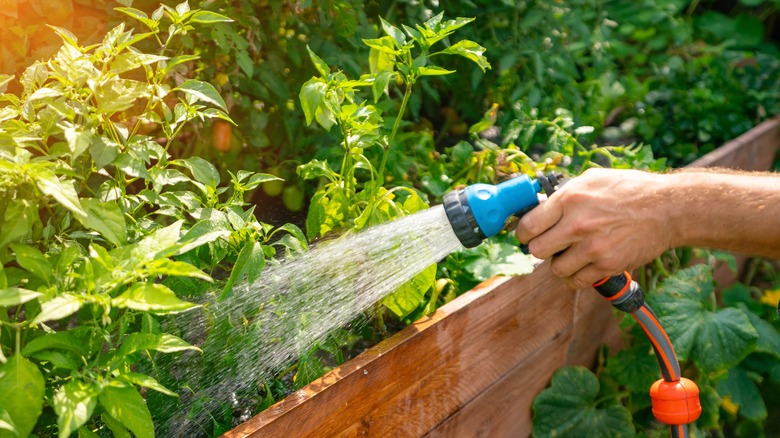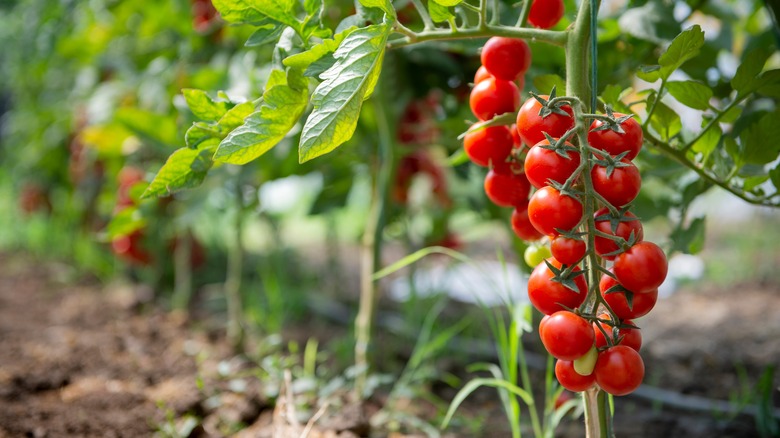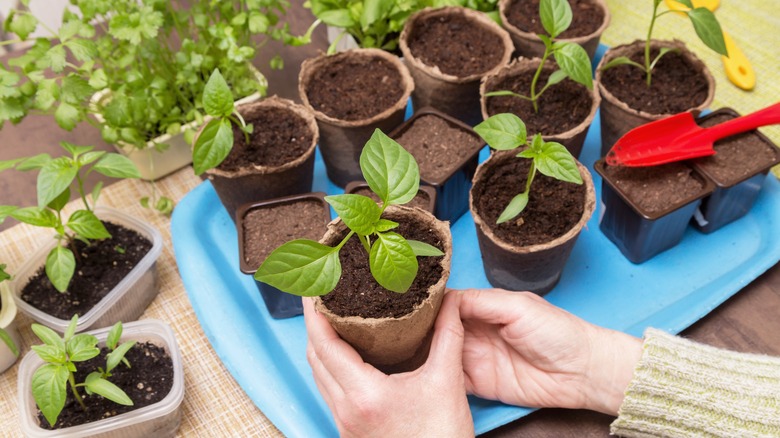How To Determine How Many Plants Can Fit Into Your Garden
When creating your garden, you need to spend time deciding how many plants to include. Whether it's filled with vegetables or flowers, there must be enough space for the plants to grow. A crowded garden can lead to health problems for your plants and can ultimately end with them dying. As they grow, crowded foliage can begin to tangle together above ground while the plants' roots do the same under the earth. Soon your plants will start fighting over who gets the water and fertilizer in the soil.
Plants placed too close together will also put themselves at a higher risk of fungal infections. This is because the wind won't be able to flow between them, drying up any leftover moisture from the rain or morning dew. The sun also won't be able to shine over any shorter foliage to assist in drying them before any fungus starts to grow. It's also important to space your plants out properly if you're growing a vegetable garden because it'll be hard to harvest them if you have no room to walk. Luckily, it's quite simple to find out what spacing measurements you'll need for your plants to grow and thrive.
In your garden
The type of garden you're building affects how much vegetation you can put in it. If you're putting your plants straight into the earth, you can follow the guidelines on the care tag. It will tell you how many inches should be between each vegetable or flower. For beginners, the Old Farmer's Almanac recommends sticking with a vegetable garden that's about 10 feet by 10 feet. In that space, you can have at least nine plants. It'll be easier to handle three to five different types of vegetables organized in their own rows with up to five plants in each one.
Fitting flowers into a garden, meanwhile, doesn't have to look so strategic — though placing them in triangles can make them more aesthetic for your landscaping. The amount of space each plant needs between them depends on how large they'll be when fully grown. Small flowers need at least 12 inches of space around them, medium ones should get 18 inches, and large ones need about 3 feet. You can also calculate it as no more than four medium-sized plants for every 10 square feet in your garden.
In a pot or raised garden bed
Raised garden beds and pots are other options if you want to avoid putting your plants directly into the dirt in your yard. Depending on your needs, each container comes with its own benefits. Raised garden beds allow you to save space because you can place your plants closer than the recommendations on the care tag. Per Planet Natural Resource Center, consider staggering the rows instead of creating a grid pattern to make the most of the area you're working with.
If you choose to grow your flowers, vegetables, or herbs in pots, you can start by seed earlier in the year. Since you can move pots, these containers are the best for germinating indoors and transplanting once it's warm outside. To do this, you'll need to reference the seed spacing measurement for how much room each plant will need. Make sure you're adding more than necessary when sowing to ensure you have at least one plant per pot. Then once the seedlings are a couple of inches tall, you can thin them out by removing the small weak ones. If you'd like to transplant them, space them out according to what the seed packet says for plant spacing.


